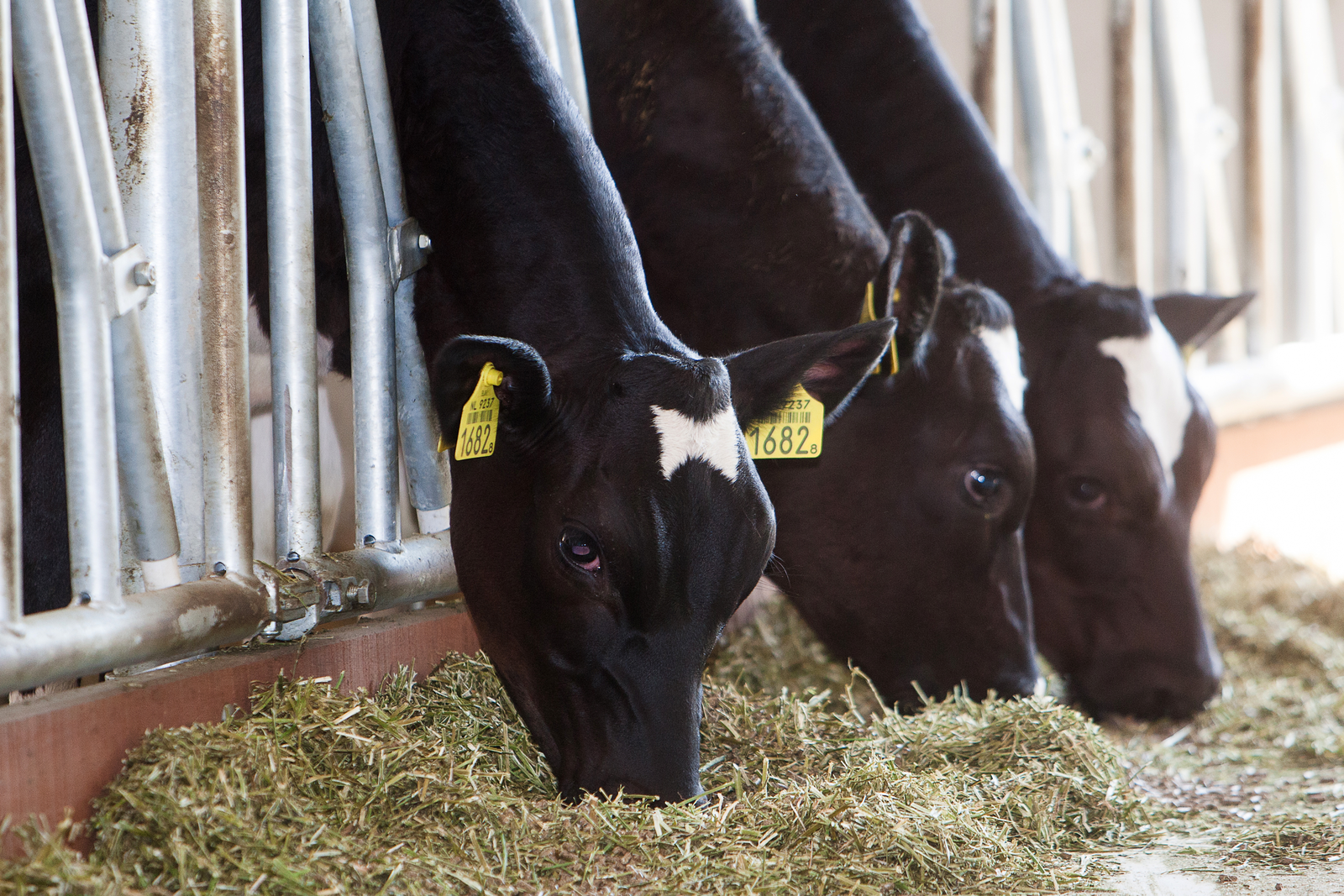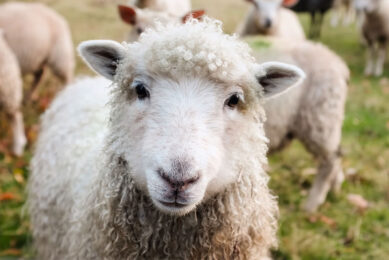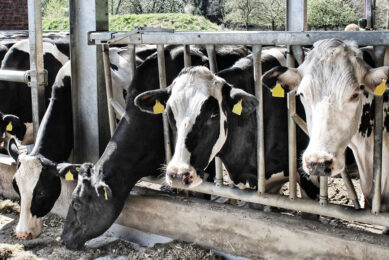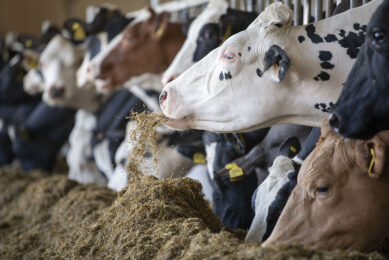Successful dairy farming starts with feed

The slowdown in Chinese dairy demand, milk quota abolition in Europe and Russian trade sanctions are factors that have forced many dairy farmers to step up the profitability of their farms. Increasing feed efficiency with the right set of tools can help.
Dairy farmers across the globe are facing a challenging economic situation. As feed makes up over three-quarters of the average production budget cost, it is crucial to step up the efficiency of transferring gross energy into milk. This can be done by stimulating digestion and to maximize nutrient use so that, ultimately, Income Over Feed Cost (IOFC) can be improved, providing farmers with financial benefit. The effect of improving feed efficiency on IOFC is calculated for an example farm in Table 1.
Optimisation tools
A crucial step in optimising feed efficiency on farm, is an assessment of the current farm status and an identification of improvement points on farm. A new set of tools released recently by Cargill is designed to provide such an audit. One of these tools, the digestion analyser, provides insight into the digestibility of the diet. Too many large and medium particles in the slurry is a signal that the digestion is below standards and may have different causes. The quality of the silage may be insufficient, the rumen function is disrupted for instance due to acidic conditions in the rumen or the cow is selecting its diet at the feed fence, hence consuming a sub-optimal diet. To further investigate the feed quality, Provimia works with a portable near infrared (NIR) spectroscopy device which is used directly on-farm. This analyses nutrient levels in fresh feed materials in only a few seconds. The analysis can be applied to (purchased) roughage, own grown silage, and TMR rations. The tool can also help to determine the best time for harvesting forage by monitoring the dry matter, crude protein and NDF content of grass and corn before harvesting. Having such a quick and inexpensive analysis tool allows producers to analyse feed ingredients more frequently, thus accounting for the feed value of those ingredients in dairy diets.
Raw material characteristics
After having uncovered practical indicators in the on-farm tests that show that digestion isn’t optimal, the next important step is to thoroughly evaluate the diet in situ. Cargill does this by using its proprietary ration calculation programmer, which is based on nutritional knowledge gathered from hundreds of trials. In addition, the output of practical on-farm tools like this can be used within the feed efficiency concept to better estimate raw material characteristics. For instance, starch degradability can be affected by various factors that can be measured such as particle size for corn grain or how long corn silage has been ensiled. These factors are important to consider when balancing the diet according to the producer’s needs. Last but not least, the effect of specific products such as feed additives on milk production, feed efficiency and economics for each dairy unit can be evaluated, thus helping farmers and feed industry partners to select the most suitable solution for their particular circumstances. The cost savings associated with this better ingredient insight can be very significant.
Activating the feed efficiency engine
To increase producer earnings, it is important to find out how feed efficiency can be improved for each dairy unit. While feed efficiency between farms can be very similar, factors such as stage of lactation, herd age structure, ration formulation and intake levels can make comparisons very difficult. Within a unit, feed efficiency is positively correlated to the efficiency of converting feed into nutrients for milk production within the rumen. Critical factors to consider are; an active rumen microflora, a balanced rumen environment and an optimal fibre breakdown. These factors ensure a balanced nutrient supply to the rumen microflora and ultimately to the dairy cow. This is essential for milk production and for feed efficiency.
Specific nutritional solutions
Optimal diets cannot always be formulated with the ingredients and feeds available on-farm. To address the critical factors described above, specific nutritional solutions are sometimes necessary to achieve the targeted milk production, feed efficiency and IOFC. Based on recent research at Cargill’s Innovation Centers, specific nutritional solutions have been developed supporting dairy producers. One of these solutions includes a more powerful and longer-lasting alternative to standard buffers such as sodium bicarbonate, which has been proven to help keep a more balanced ruminant environment in extensive laboratory tests and on-farm trials. Recently, a farm trial was conducted in the Netherlands comparing this alternative to sodium bicarbonate. The trial consisted of 2 groups of 20 cows at the start of lactation (on average 90 DIM at the start of the trial). The first group received 100 grams of the Rupromin Balance from Provimi, the second group 265 grams of sodium bicarbonate as the alternative has previously been shown in vitro to be a 2.65 times stronger buffer. The buffers tested were fed mixed into the concentrate. After four weeks, production results were evaluated by looking at milk yield and fat and protein content. Concentrate intake was significantly lower in the sodium bicarbonate group, most likely due to negative palatability. These problems did not occur with Rupromin Balance as it is effective at a much lower inclusion rate (2.65 times lower) and is more palatable than competitors and hence has no detrimental effect on dry matter intake. Whilst the anticipated outcome was that treatments would perform similarly, the alternative also resulted in a numerical increase in milk production of 0.5 kg (Figure 1), maintaining milk fat content. The results prove that buffering the rumen with Rupromin Balance™ helps to improve rumen fermentation and feed efficiency. Milk production can also be improved by increasing the fibre digestibility by stimulating the rumen microflora. Multiple trials with Amaferm®, zootechnical feed additive specifically selected to improve fibre digestibility, has shown that milk production can increase with more than 7% for early lactating cows.
Figure 1 – Use of Rupromin Balance™ shows improved milk yield over Sodium Bicarbonate with no compromise on quality.

Back in the driver’s seat
Improving feed efficiency and therefore the dairy farmer’s profit starts with knowing what is being fed, both in quantity and quality. Using the right feed efficiency tools can certainly help to make the right choices on farm. Taking an integrated feed efficiency approach also helps farmers make the right choices in terms of additives to be used on farm, avoiding spending money that will not yield profitable results. Instead, an accurate estimation of what additives can bring in terms of Income Over Feed Costs growth before applying them, puts the farmer back in the driver’s seat in terms of achieving economic farming and future sustainability.
aProvimi is a global Cargill brand specialised in offering leading-edge premixes, concentrates and specialties like milk replacers, piglet feeds and special additives along with expert nutritional advice to animal producers and feed manufacturers.
For more info and references, please contact info@provimi.com.
Join 26,000+ subscribers
Subscribe to our newsletter to stay updated about all the need-to-know content in the feed sector, three times a week. Beheer
Beheer









 WP Admin
WP Admin  Bewerk bericht
Bewerk bericht